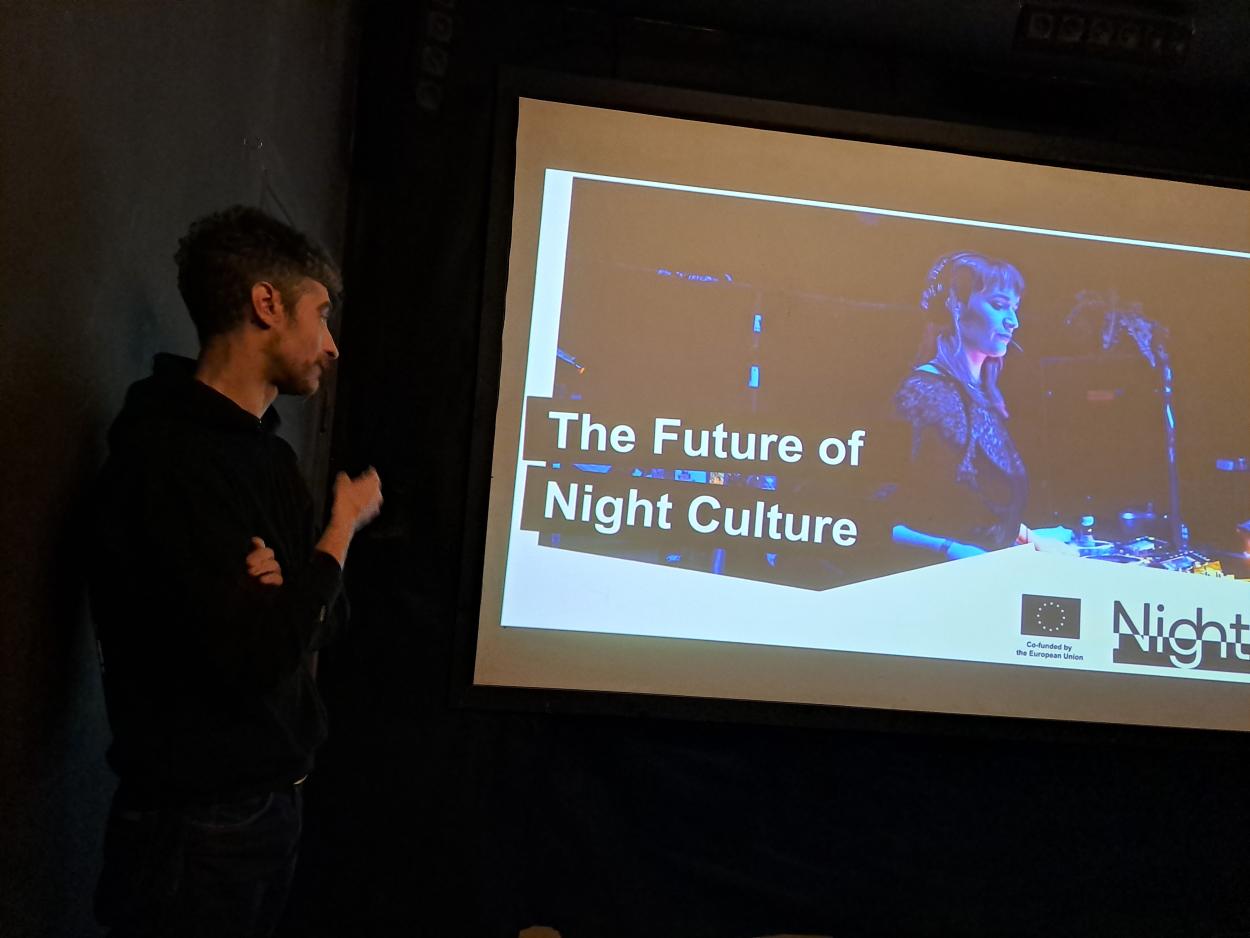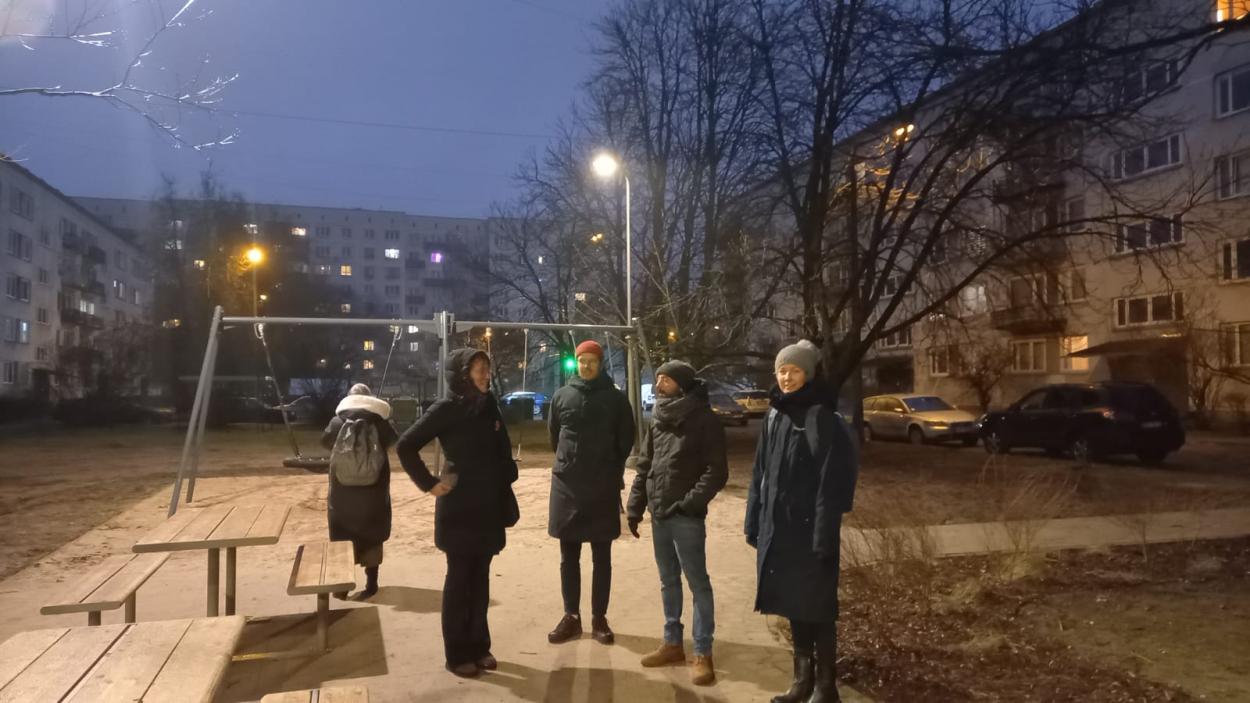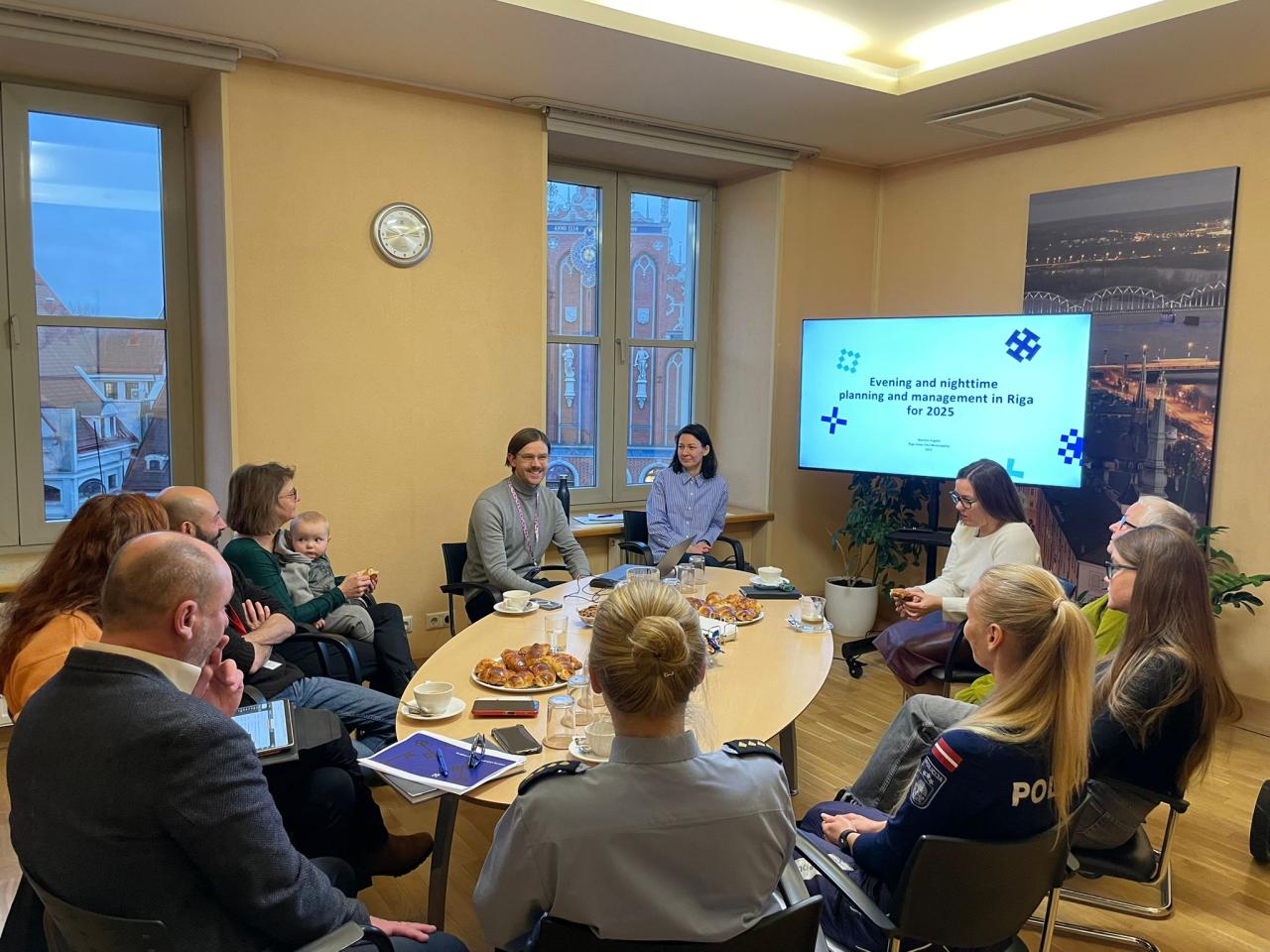On January 16, 2025, a visit of the project’s lead expert and the representative from the main project partner from Turin, Italy, took place in Riga, Latvia. During this visit, the guests were introduced to the current situation in Riga, as well as to the local experts and their areas of expertise related to the project and the selected scope of Riga.
The main meeting was held in the Riga City Hall and the meeting itself provided an overview of the city's management and planning processes regarding night-time and security in Riga. Representatives from various sectors of the city’s governance participated in the meeting. These included the Vice Mayor of Riga, the Chairwoman of the Riga City Council City Development Committee, the Chairwoman of the Riga City Council Education, Culture, and Sports Committee, members of the Riga Neighbourhood Residents’ Centre and the Riga Municipal Police, as well as representatives from the State Police. The meeting provided an opportunity for the guests to engage with key local figures, exchange knowledge, and discuss the first ideas of possible strategies for addressing the challenges related to the project's goals.
After the meeting in the Riga City Hall, guests visited Kaņepes Cultural Center, a hub for cultural activities and community engagement, where they learned about the Center’s mission and contributions to safer nightlife and insights from the international projects NightSchool, Sexism Free Night, and Enter The Void.
Later guests visited the NGO House, which supports non-governmental organizations and is located next to the project’s pilot territory – Purvciems Neighborghood. In the NGO House guests also had an opportunity to discuss the project details with the representative of the Purvciems Development Association in person and the Purvciems Neighborghood Association online. Finally, guests had a walk in the Purvciems Neighborghood, allowing them to gain a first-hand understanding of the area and its specific needs.
This visit was an essential step in the ongoing collaboration between Riga and Turin, helping to build a shared understanding of the challenges and opportunities for improving urban safety and planning, particularly in the context of the project's focus on enhancing the sense of security during nighttime.
«Participants discussed strategies for addressing the challenges related to the project's goals»
Context and background
The Purvciems neighborhood in Riga has been selected as the pilot area for the project. It is not only the most populous neighborhood in the city, with over 52,000 residents, but also one of the largest in terms of area. This neighborhood is characterized by Soviet-era high-rise buildings, a feature common to many other parts of Riga and also to other cities in Latvia. Since similar neighborhoods can be found elsewhere in Riga, the methods and solutions developed to improve security feeling in Purvciems can be adapted and applied in other similar neighborhoods in Riga and cities that have comparable urban structures. This is particularly important because these neighborhoods often share common challenges, such as lack of public safety, especially during nighttime hours, inadequate infrastructure, and low community participation.
The methods and solutions developed in this project will not only contribute to improving the sense of safety in Purvciems, but will also be used in the creation of Riga's nighttime planning and governance policy. This policy will be a significant step in the city’s development planning, as it will help create a safer and more attractive environment for both residents and visitors. The development of this planning policy will include specific measures aimed at improving safety at night, such as the installation of additional lighting, the development of nighttime public transportation options, as well as engaging and educating residents on safety issues.
Moreover, the experience gained from this project will be valuable for other cities facing similar challenges. As many European cities are currently looking for solutions to improve residents' safety and the quality of life in urban areas, the methods developed in this project can serve as a guide for those wishing to enhance public space quality, especially during nighttime. The collaboration between different countries, sharing experiences and best practices, will help provide sustainable and effective solutions that can be applied to various cities and neighborhoods. By learning from the successes and challenges encountered in Purvciems, other cities can implement strategies that promote community engagement and safety, ultimately contributing to the overall improvement of urban life across Europe.

« Neighborhood is characterized by Soviet-era high-rise buildings »
Challenges
The Purvciems area is highly urbanized, but its public infrastructure remains relatively underdeveloped. Many of the neighborhoods within the neighborhood lack sufficient public spaces, which hinders opportunities for residents to engage in collective activities. The neighborhood is home to people from a variety of ethnic groups, creating a rich cultural and social environment. However, despite this diversity, the local community is relatively passive and not very involved in various public activities or discussions, which often impedes the neighborhood's development and improvements.
In addition to being large both in terms of territory and population, Purvciems' diverse structure presents additional challenges when planning and implementing initiatives. A significant portion of Purvciems' buildings consists of multi-apartment houses, where the courtyards, which are essential for public and safety purposes, do not belong to the municipality but to the private homeowners. This situation significantly limits the municipality's ability to improve these courtyards, as any upgrades or infrastructure development depend on the individual homeowners' willingness to carry out such work. As a result, necessary improvements that could enhance the quality of life and security for residents are often delayed or not implemented at all.
To address these issues, the involvement of not only the municipality but also the active participation of residents and the creation of awareness about how their individual responsibility can contribute to the overall development of the neighborhood is crucial. Educating residents about the fact that they are responsible for their properties, and that collectively made decisions can foster neighborhood development, are essential steps forward in addressing the existing problems. This would ensure that progress can be made through cooperation and shared responsibility.
« Diverse structure presents additional challenges when planning and implementing development initiatives »
Goals and outcomes
The goals and outcomes of the meeting centered on fostering collaboration among key stakeholders to address the safety and community engagement challenges in Purvciems. The meeting provided an opportunity for experts and local authorities to discuss the current situation in Riga, exchange first ideas of improving safety in urban areas at night. The outcomes included a clearer action plan for the next steps, with a focus on enhancing public space management and creating a safer environment. Additionally, the meeting helped strengthen partnerships between local authorities, experts, and community organizations, setting the stage for future collaboration.
« The project's solutions could be implemented in other neighborhoods with similar characteristics »



